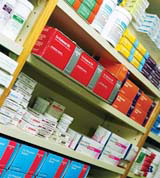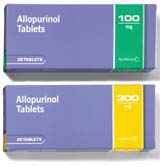Medical packaging design

An official report outlining good design practice for pharmaceutical packaging means more opportunities for designers, says Scott Billings
It is estimated that around a third of medication errors occur due to confusion triggered by product packaging and labelling. Such mistakes can be harmful to patients, but also costly to the health service and potentially time-consuming for pharmacists.
In an attempt to address these problems, good design practice is moving up the agenda of the pharmaceutical industry. The NHS National Patient Safety Agency is about to begin distributing its Design for Patient Safety Report to manufacturers, one of a series of collaborations with the Helen Hamlyn Research Centre at the Royal College of Art. Meanwhile, various industry bodies are lobbying for changes to the way medicines are dispensed, to ensure patients always receive the full usage information with each product (DW 27 October).
Clarity and consistency in pack design can help reduce patient errors and minimise selection mistakes by pharmacists. According to NPSA head of design and human factors Colum Lowe, there are ‘certainly different qualities of pack design out there’ and he will use the agency’s report to open a dialogue with manufacturers in an attempt to raise their standards of design.
‘Historically, we have tended to blame medication errors on humans, either the pharmacists or the patients themselves. But we haven’t really pointed at pack design as a contributor to some of these mistakes,’ says Lowe. ‘Our aim is to get the report out to as many pharmaceutical companies as we can find, and hopefully, they will take on some of its recommendations.’
The NPSA report guidelines are concerned with clear communication – not styling, positioning or branding. ‘[It is] necessary that the packaging of medications prioritises patient issues – for example, legibility and ‘openability’ – above industry concerns, such as brand presence, especially where patient safety might be compromised. It is crucial that packaging designers and pharmaceutical companies adopt best practice in graphic and information design,’ writes the report’s author and HHRC research associate, Thea Swayne.
However, Lowe is conscious of a desire by manufacturers to advertise their brands. ‘There are concerns about the use of brands, which we are aware of. Manufacturers obviously don’t want to just have bland boxes, as they have to be able to advertise themselves. But it is certainly questionable how useful the brand is for pharmacists,’ he says.

Designers must cater for three principal parties when working on medical product packs, each with its own requirements. Manufacturers are concerned about cost, legal requirements and branding; for pharmacists, the accuracy and speed of the selection and dispensing processes are key factors; and for patients, usage information and safety are paramount, although the brand also plays an important role.
The design process must involve all these parties. Creative Leap has worked on packaging for a wide range of medical brands, including Almus and Glaxosmithkline. Creative director Mark Chitteneden is aware of the differing needs of users. ‘What we find interesting is the void that can develop between what is considered good practice with manufacturers, and what pharmacists and consumers want,’ he says.
There is a complex interrelation between these groups and the authorities when it comes to medical packaging and branding. The Department of Health’s executive arm, the Medicines and Healthcare products Regulatory Agency, last year updated its guidelines regarding branding. It discourages the use of prominent umbrella brands, favoured by manufacturers that are keen to develop a clear identity in the market.
‘Pharmacists don’t think in terms of brands, they think of formulations. Consumers don’t think of formulations, but of brands,’ says Chitteneden. ‘But consumers’ design needs, in terms of branding, have been neglected slightly by the authorities, which are looking out for patient safety.’
One such move to safeguard patient safety – and reduce the workload of pharmacists – is the call to introduce original pack dispensing, where all medicine is given to the patient in its original packaging, using designs procured by the manufacturer. According to the Royal Pharmaceutical Society, an estimated 45 per cent of medicines in the UK are repackaged from bulk supplies by pharmacists, with usage and product information often lost in the process.
A Department of Health consultation on simplifying the dispensing process is currently underway and will be completed by the end of November. The National Pharmacy Association and the RPS have called for the use of original – or patient – packs for all medicines. This would ensure all patients receive a Patient Information Leaflet and have access to on-pack information. Most countries in the European Union already dispense solely in original packs. If the Department of Health falls in line with this practice, design opportunities could arise, as products presently delivered in generic bulk containers will require their own pack designs, geared towards patients.
Although a secondary consideration to patient safety, the move could also increase the volume of packaging materials used by the pharmacy industry, ‘a consideration that we will be looking at in the consultation’, says a spokeswoman for the Department of Health.
REPORT BY National PATIENT SAFETY AGENCY / HELEN HAMLYN RESEARCH CENTRE
• Easy identification, dosage compliance and information degradation were considered
• Report presents guidelines on colour, type size/style and hierarchies of information
• Light type on blister packs can be illegible in bright lights and information degrades as blisters are opened
• Colour-blindness and reliance on colour over written information are issues with some colour-coding
• Medicines with similar packaging and naming can be erroneously selected by pharmacists when stored alphabetically
• NPSA hopes to open dialogue with manufacturers to raise standard of pack designs
• Download the report at www.theaswayne.co.uk
-
Post a comment




